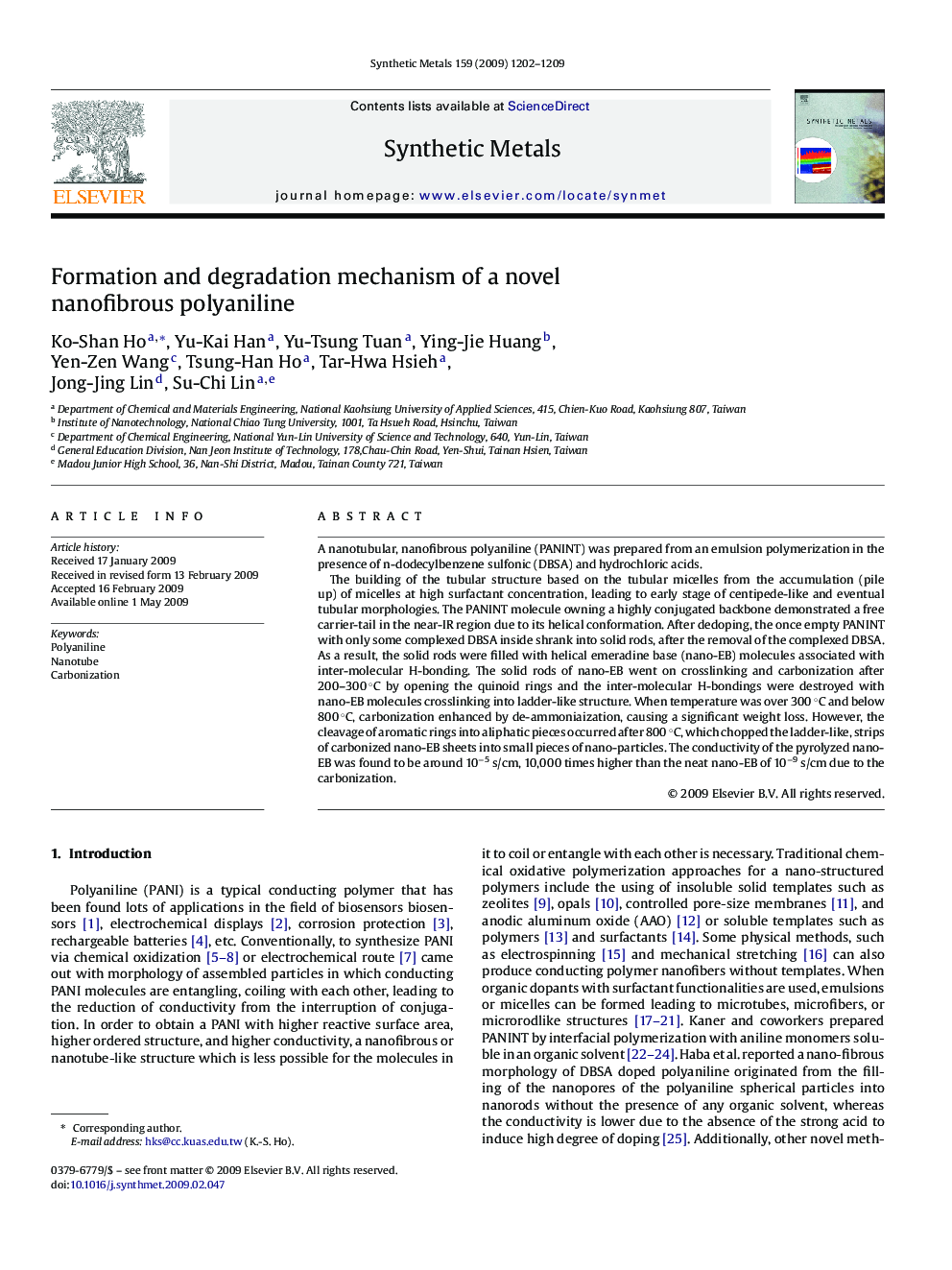| کد مقاله | کد نشریه | سال انتشار | مقاله انگلیسی | نسخه تمام متن |
|---|---|---|---|---|
| 1442672 | 988129 | 2009 | 8 صفحه PDF | دانلود رایگان |

A nanotubular, nanofibrous polyaniline (PANINT) was prepared from an emulsion polymerization in the presence of n-dodecylbenzene sulfonic (DBSA) and hydrochloric acids.The building of the tubular structure based on the tubular micelles from the accumulation (pile up) of micelles at high surfactant concentration, leading to early stage of centipede-like and eventual tubular morphologies. The PANINT molecule owning a highly conjugated backbone demonstrated a free carrier-tail in the near-IR region due to its helical conformation. After dedoping, the once empty PANINT with only some complexed DBSA inside shrank into solid rods, after the removal of the complexed DBSA. As a result, the solid rods were filled with helical emeradine base (nano-EB) molecules associated with inter-molecular H-bonding. The solid rods of nano-EB went on crosslinking and carbonization after 200–300 °C by opening the quinoid rings and the inter-molecular H-bondings were destroyed with nano-EB molecules crosslinking into ladder-like structure. When temperature was over 300 °C and below 800 °C, carbonization enhanced by de-ammoniaization, causing a significant weight loss. However, the cleavage of aromatic rings into aliphatic pieces occurred after 800 °C, which chopped the ladder-like, strips of carbonized nano-EB sheets into small pieces of nano-particles. The conductivity of the pyrolyzed nano-EB was found to be around 10−5 s/cm, 10,000 times higher than the neat nano-EB of 10−9 s/cm due to the carbonization.
Journal: Synthetic Metals - Volume 159, Issue 12, June 2009, Pages 1202–1209